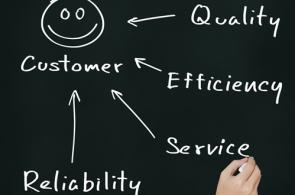- Enterprise
- Essentials
 As an ecommerce business owner, you've likely heard a lot about managing customer relationships. Consumer appeal is probably a large aspect of your success in retail, so it's important to dedicate ample time and resources to ensure you're equipped with the right knowledge and technological arsenal to meet fluid demand.
As an ecommerce business owner, you've likely heard a lot about managing customer relationships. Consumer appeal is probably a large aspect of your success in retail, so it's important to dedicate ample time and resources to ensure you're equipped with the right knowledge and technological arsenal to meet fluid demand.
It's often said that successful businesses have the most loyal customers. But for your business to create brand allegiance among your clientele, you must first understand your customers and the journey they took to get to your website.
What is the customer lifecycle?
In terms of customer relationship management, the customer lifecycle describes the various stages a consumer goes through before, during and after they complete a transaction. Simply put, it's the Point A to Point B journey a customer takes until they make the final purchase.
The phases a customer passes through during the course of an ongoing relationship with a brand vary on a case-by-case basis, but here are five basic stages of a customer lifecycle:
- Reach: Your marketing material and content needs to be in places where consumers will find it. Reach is the first step in the lifecycle because it develops awareness right away.
- Acquire: Ecommerce acquisition is very important. Reaching potential customers won't mean much if you can't offer relevant content or messaging. Understanding your brand, the products you offer and what type of person will buy them will help with acquisition. Contacting them directly with personalized communication improves the odds of a future conversion.
- Develop/nurture: Once that first purchase is made, your business needs to keep in contact with the customer. This is where you develop a relationship with the buyer, ensuring they're fully satisfied with their initial transaction. You can also use back-end analytics to predict what else they may like based on what they bought the first time around. Asking for feedback also helps develop the relationship; customers like that their opinion is valued.
- Retention: If you're able to continually send relevant and meaningful messaging to a customer, the chances that they return and make another purchase are higher. Retention begins with satisfying a consumer's needs, caring for them and cultivating the relationship. If you can take a customer's feedback and use it to improve a product or service, you make them feel as if they were a part of the process. Performing a customer feedback analysis is key in finding actionable insights that can lead to a stronger customer relationship. This type of trust is valuable to customer retention.
- Advocacy: Once the retention stage of the lifecycle is reached, you want these customers to become a brand advocate for your business. If they are truly satisfied, they likely won't have issues recommending your products or services to friends and family. Spreading awareness amongst social circles is easy to do once a customer is loyal to a brand, and if they continually spread positive recommendations, their extended network is more likely to convert as well.
The beauty of the customer lifecycle lies in the fact that it's nonlinear, meaning it follows a cyclical pattern at the end. Customer retention is the end goal in developing strong brand loyalty, but your business needs to continually offer relevant and timely messaging to prior customers, otherwise your top-of-mind awareness will quickly fade.
The customer lifecycle can help your business maximize the revenue potential for each client who makes a purchase on your website. Once a customer has become a brand advocate, the potential for upselling increases as a result. New product features, releases or exclusive offers are also a great way to progress consumers through the lifecycle. As long as your messaging is consistent, relevant and is in tune with their needs, you can turn one-time buyers into loyal customers quickly.
Start growing your ecommerce business even faster.
Start Your Free TrialHigh-volume or established business? Request a demo